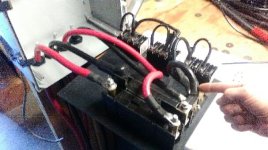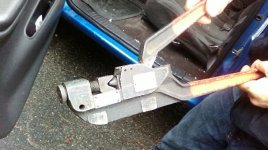spinningmagnets said:A key element in soldering to XT90's is not only inserting the male/females together, the soldering must take place quickly.
I use a 100W soldering iron, and the job is done rapidly. If I used a weaker soldering iron, I might be forced to hold the hot iron onto the socket for a longer amount of time.
It's the length of time that allows the heat to travel up into the plastic...
Totally agree. I bought a bag of good XT90's to practice with before building my first backpack/battery length power cable...having never worked with XT90 connectors. After finding out what method melted or deformed the connectors, it came down to your description here. Fast, strong heat and having the connectors plugged into each other. The units plugged into each other kind of acted a little like a heat sink I'm guessing...bigger area with less overall effect on the yellow plastic...if that makes sense. I think the quality of the solder and wire used is critical too. With the price of good copper wire, it's tempting to go a little cheaper on the wire and its insulation. Get good wire and solder.



